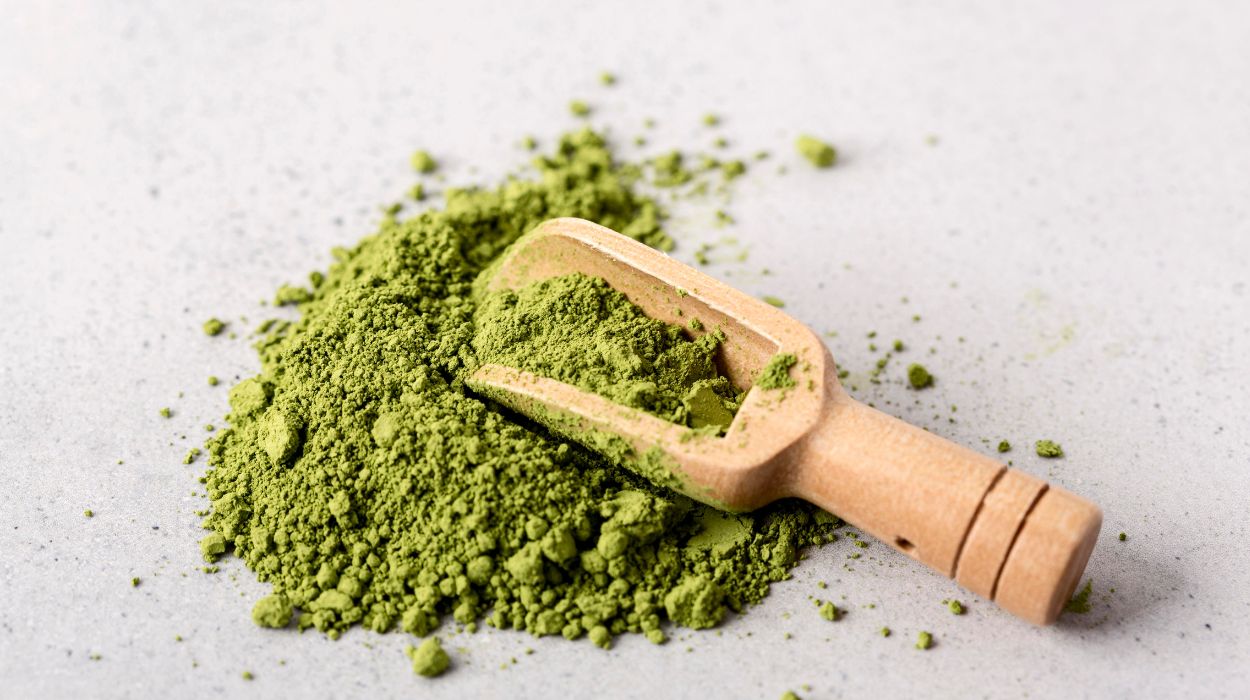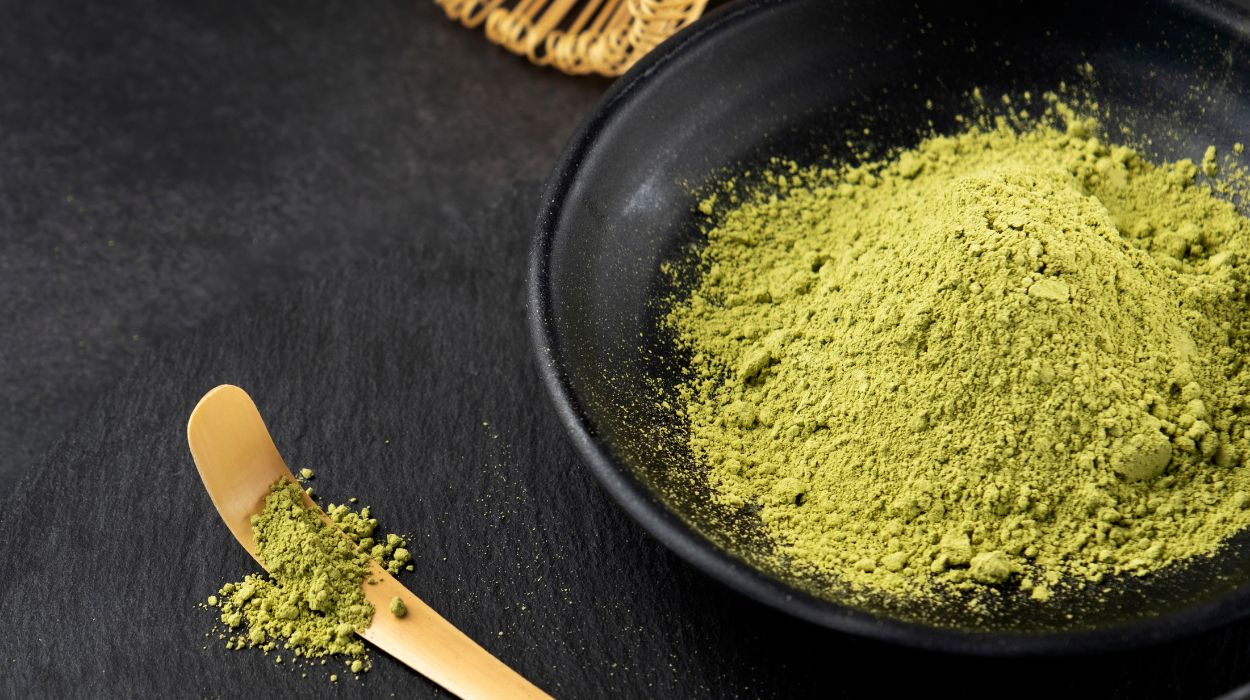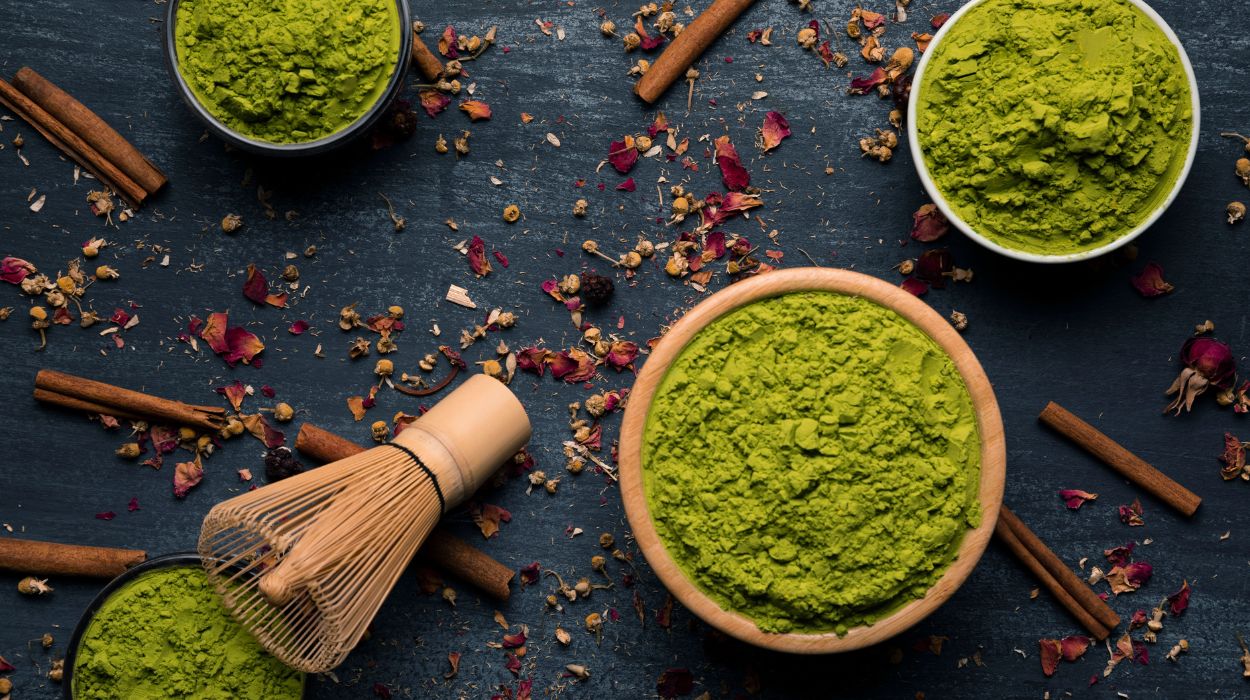 Evidence Based
Evidence Based
Evidence Based
This article is objectively based on relevant scientific literature, written by experienced medical writers, and fact-checked by a team of degreed medical experts.
Our team of registered dietitian nutritionists and licensed medical professionals seek to remain objective and unbiased while preserving the integrity of any scientific debate.
The articles contain evidence-based references from approved scientific sites. The numbers* in parentheses (*1,2,3) will take you to clickable links to our reputable sources.
Are Green Powders A Waste Of Money? Things You Must Know 2024

Green powders are worth it for you as they are extremely beneficial for addressing nutrient gaps in your diet. A good green powder offers a myriad of health benefits[1] such as promoting heart health, weight loss, reducing the effects of aging, improving energy levels, and even reducing the effects of aging
Green powders are dietary supplements consisting of several health-promoting ingredients:
- Probiotics[2] – aid digestion and help maintain gut health
- A base of antioxidant-rich grasses (typically wheatgrass, barley grass, spirulina, and/or chlorella) – high in nutrients and antioxidants.
- Powdered algae – antioxidant, anti-inflammatory, and brain-protective properties
- Vegetables – important source of potassium, vitamin A, dietary fiber, folate, and vitamin C.
- Fruits – critical to meet body’s vitamin and mineral needs
- Seaweed – good for thyroid health
- Digestive enzymes – essential to nutrition and overall good health
- And more
Green powders are typically designed to boost your energy and help you pack in additional nutrients your body might be lacking.
The green powder is consumed by mixing into water, other juices, or smoothies, to create a low-calorie, but nutrient and vitamin-rich drink.
That being said, let’s explore and read more about green powders, how they work, and how to maximize the health benefits without heavily relying on them.
Are Green Powders Worth It?
Yes. Green powders can be worth it as they offer a convenient and concentrated source of nutrients from various greens, including kale, moringa, spirulina, and wheatgrass. They provide a quick and easy way to supplement one’s diet with essential vitamins, minerals, antioxidants, and phytonutrients, especially for individuals who struggle to consume enough greens through whole foods alone. However, it’s essential to choose high-quality powders with minimal additives and to remember that they should complement, not replace, a balanced diet rich in whole, fresh fruits and vegetables.
Are Green Powders A Waste Of Money?
The real answer to this question is actually both ‘a yes’ and ‘a no.’ It is important to understand that not all green powder brands can be trusted sites for ensuring complete nutrition. Only some are worth your money.
Greens powders comprise 30-40 or even more ingredients, which vary by brand. These ingredients commonly include:
- Seaweed – nori, dulse, sea lettuce, kelp, chlorella, spirulina
- Grasses – Alfalfa grass, barley grass, oat grass, wheatgrass,
- Other vegetables – Beets, broccoli, green cabbage, carrots, tomatoes, green cabbage
- High-antioxidant fruits – Blueberries, raspberries, goji berries, acai berries
- Leafy greens – Collard greens, spinach, kale, moringa, parsley
- Nutritional extracts – Ginkgo biloba extract, grape seed extract, green tea extract
- Herbs – Holy basil, astragalus,echinacea, milk thistle
- Probiotics: Lactobacillus (L.) rhamnosus, L. acidophilus, Bifidobacterium lactis
- Plant-based digestive enzymes – Cellulase, lipase, amylase, papain, protease
- Extra fiber – Apple fiber, Rice bran, inulin
- Mushrooms – Maitake mushroom extract, shiitake mushroom extract
- Natural sugar substitutes – Monk fruit extract, Stevia leaf extract
To determine the number of superfoods your green powder supplement contains, it’s important to look at the SFP (Supplement Facts Panel)[3] with a critical eye. The SFP helps you to decide whether or not a particular green powder is worth your money.
An average reputed brand green powder supplement offers about 5,000-7,000 mg worth of superfoods per serving. This much appears to be a lot of superfoods, but a quality green powder supplement provides as much as twice that amount.
If you choose a top-shelf green powder that contains the maximum number of superfoods (say more than 30), it’s completely worth every penny. Green powders are not a waste of money if used as complementary supplements to your already established healthy dietary patterns.
What Are Green Powders?

Green powders are concentrated dietary supplements composed of a blend of various leafy greens, vegetables, and sometimes fruits. They offer a convenient means to incorporate essential nutrients into one’s diet, especially for those who struggle to consume sufficient quantities of fresh produce daily. Common ingredients found in green powders include kale, spinach, broccoli, wheatgrass, spirulina, chlorella, and moringa, and green tea extract. These ingredients are chosen for their dense nutritional profiles, providing vitamins, minerals, antioxidants, and phytonutrients vital for overall health.
These powders are often marketed as supplements to support a healthy diet and lifestyle. They claim to fill nutrient gaps, boost energy, enhance immune function, aid digestion, and promote detoxification. However, it’s crucial to view green powders as a complement rather than a replacement for whole, fresh fruits and vegetables. While they offer convenience, they lack the full spectrum of nutrients and fiber found in whole foods.
Choosing high-quality green powders made from organic or sustainably sourced ingredients without unnecessary additives is essential. Individuals with dietary restrictions or health concerns should consult healthcare professionals before incorporating green powders into their routine. Despite their convenience and potential benefits, green powders should be part of a balanced diet rich in whole foods for optimal health and wellness.
Benefits Of Green Powders

The nutrients in greens powder supplements can contribute to a host of health benefits including:
Healthy Blood Pressure
Green powders are rich in nutrients like potassium, magnesium, and nitrates. These nutrients help manage heart rhythm disorders, improve blood flow and support healthy blood pressure[4]. These minerals also aid in balancing the high sodium effects that could trigger high blood pressure.
Support Hormone Balance
A variety of cruciferous vegetables like broccoli, kale, collards, turnips, etc. often make up the foundation of greens powders. Certain phytochemicals, vitamins, and minerals present in the green powders are associated with maintaining a healthy balance of hormones.
Support Detoxification
Green powders are rich in nutrients like folates, betaine, and methionine that play an essential role in the body’s natural detox process. For example, cruciferous vegetables – one of the ingredients in a green powder, promote the production of glutathione[5], a powerful antioxidant that safeguards the body from free radicals, harmful toxins present in our environment.
Increase Nutrient Density Of Your Diet
It is usually impossible to eat the recommended five servings of all vital nutrients per day. Green powders are one of the richest sources of vital minerals, vitamins, antioxidants, and carotenoids. These carotenoids are also called rainbow nutrients[6] as these nutrients come from colorful foods).
Green powders offer a simple way to improve the nutrient density of your diet. This also allows the consumption of a concentrated mixture of fruits and veggies without too much effort.
One tablespoon of greens powders comprises as many as 30 plus different veggies, fruits, and superfoods.
Balance Blood Sugar
Greens powders contain ingredients that help optimize insulin[7] and blood sugar responses. They may help in reducing blood sugar levels, improving glucose tolerance, and stimulating the secretion of glucose-dependent insulin. Basically, green powders may support healthier blood sugar management and are beneficial in effectively managing both Type 1 and Type 2 diabetes.
Support Brain Health
Green powders may be helpful in improving cognitive function and boosting brain performance[8]. Green supplements are rich in nutrients like zinc, vitamin K, magnesium, lutein, folate, copper, iron, and beta-carotene that are crucial for nerve signaling, enhancing learning, and preserving memory.
Protect Heart Health
Green powders are rich in minerals and vitamins, omega-3 fatty acids, and folates that may aid in heart disease prevention[9]. Magnesium and nitrates present in the green powders may help improve blood flow in the body and maintain pressure levels that may reduce heart disease risk.
Help Balance pH
Green powders may help regulate the body’s pH by neutralizing acids[10] that build up when consuming a highly processed, high-carbohydrate diet. The green supplements may lower your overall acid load, and doing this can contribute to improved health. A balanced pH can lead to better overall bone health, as well. Increased acidity makes for poorer bone structure leading to osteoporosis.
Do Green Powder Supplements Really Work?
Green powder supplements can work when you choose a supplement with the right combination of ingredients at the appropriate dose. You may be wondering “is kale powder good for you?” Powdered kale is a frequent ingredient in greens powders. Part of the reason green powders work is the ingredients in them. The benefits of kale include vitamin A, folate, and omega-3 fatty acids it contains. And, this is just one ingredient.
There’s a reason the ingredients in the green powder supplements are classified as “superfoods[11].” These ingredients have earned that title because of the health benefits they offer. Superfoods are picked at their optimal ripeness and include many veggies that picky eaters won’t frequently eat.
Supplementing your daily diet with green powder serves as extra insurance that you are getting enough nutrients. It may be difficult to get enough of these nutrients, even if you are someone who eats fruits and veggies every day. There are three major reasons for this.
Reason 1
Green powder supplements consist of pre-juiced fruits and veggies such as brussels sprouts and raw kale that provide a higher concentration of phytonutrients in comparison to raw fruit and veggie consumption. This is the reason juicing of veggies and fruits has become such an enormous health trend. But, the way most superfoods are packaged is by “freeze-drying” them to preserve nutrients.
For instance, most people don’t eat five servings of kale, broccoli, and spinach in one sitting. The major reason for this is that eating too many leafy greens at one time can sometimes cause diarrhea. However, drinking juice made from five servings of these veggies may be more feasible and easier to digest.
Reason 2
High-quality and branded green powders often contain a significant amount of probiotics and digestive enzymes. Probiotics are health-friendly bacteria that allow your body to properly digest, absorb, and make use of all the phytonutrients the green powder superfoods provide.
Conclusion
There is ample evidence that the brands of green powders that are high quality and reputable really work. These brands of green powder supplements contain the maximum number of antioxidants, minerals, vitamins, and ingredients that are non-genetically-modified and are organic. Therefore, you should select a green powder that comprises a significantly above-average quantity of superfoods. Your green powder supplement should also contain natural digestive enzymes and probiotics to aid with proper digestion and absorption of the superfoods.
Depending on your dietary and health requirements, green powders could be a cost-effective option to maximize your nutrient intake. On the other hand, if you do not need extra nutrition and are quite healthy, then greens powders could be a waste of money.
It all comes down to your personal situation that determines your need for a green powder supplementation and what nutrition your body needs considering the health issues you have.
Always speak to your doctor or a registered dietitian if you have concerns related to your nutritional health.
+ 8 sources
Health Canal avoids using tertiary references. We have strict sourcing guidelines and rely on peer-reviewed studies, academic researches from medical associations and institutions. To ensure the accuracy of articles in Health Canal, you can read more about the editorial process here
- Rao, V., Balachandran, B., Shen, H., Logan, A. and Rao, L. (2011). In Vitro and in Vivo Antioxidant Properties of the Plant-Based Supplement Greens+. International Journal of Molecular Sciences, [online] 12(8), pp.4896–4908. Available at: https://pubmed.ncbi.nlm.nih.gov/21954333/
- Pyne, D.B., West, N.P., Cox, A.J. and Cripps, A.W. (2014). Probiotics supplementation for athletes – Clinical and physiological effects. European Journal of Sport Science, [online] 15(1), pp.63–72. Available at: https://pubmed.ncbi.nlm.nih.gov/25339255/
- Dwyer, J.T., Bailen, R.A., Saldanha, L.G., Gahche, J.J., Costello, R.B., Betz, J.M., Davis, C.D., Bailey, R.L., Potischman, N., Ershow, A.G., Sorkin, B.C., Kuszak, A.J., Rios-Avila, L., Chang, F., Goshorn, J., Andrews, K.W., Pehrsson, P.R., Gusev, P.A., Harnly, J.M. and Hardy, C.J. (2018). The Dietary Supplement Label Database: Recent Developments and Applications. The Journal of Nutrition, [online] 148(suppl_2), pp.1428S1435S. Available at: https://www.ncbi.nlm.nih.gov/pmc/articles/PMC6597011/
- Lee, I.T., Chan, Y.C., Lin, C.W., Lee, W.J. and Sheu, W.H-H. (2008). Effect of cranberry extracts on lipid profiles in subjects with Type 2 diabetes. Diabetic Medicine, [online] 25(12), pp.1473–1477. Available at: https://onlinelibrary.wiley.com/doi/10.1111/j.1464-5491.2008.02588.x
- Pizzorno, J. (2014). Glutathione! Integrative medicine (Encinitas, Calif.), [online] 13(1), pp.8–12. Available at: https://www.ncbi.nlm.nih.gov/pmc/articles/PMC4684116/
- Minich, D.M. (2019). A Review of the Science of Colorful, Plant-Based Food and Practical Strategies for “Eating the Rainbow.” Journal of Nutrition and Metabolism, [online] 2019, pp.1–19. Available at: https://www.ncbi.nlm.nih.gov/pmc/articles/PMC7770496/
- Lamprecht, M., Obermayer, G., Steinbauer, K., Cvirn, G., Hofmann, L., Ledinski, G., Greilberger, J.F. and Hallstroem, S. (2013). Supplementation with a juice powder concentrate and exercise decrease oxidation and inflammation, and improve the microcirculation in obese women: randomised controlled trial data. British Journal of Nutrition, [online] 110(9), pp.1685–1695. Available at: https://www.ncbi.nlm.nih.gov/pmc/articles/PMC3821373/
- Johnson, M., Hassinger, L., Davis, J., Devor, S.T. and DiSilvestro, R.A. (2016). A randomized, double blind, placebo controlled study of spirulina supplementation on indices of mental and physical fatigue in men. International Journal of Food Sciences and Nutrition, [online] 67(2), pp.203–206. Available at: https://pubmed.ncbi.nlm.nih.gov/26888417/
- Jovanovski, E., Bosco, L., Khan, K., Au-Yeung, F., Ho, H., Zurbau, A., Jenkins, A.L. and Vuksan, V. (2015). Effect of Spinach, a High Dietary Nitrate Source, on Arterial Stiffness and Related Hemodynamic Measures: A Randomized, Controlled Trial in Healthy Adults. Clinical Nutrition Research, [online] 4(3), p.160. Available at: https://pubmed.ncbi.nlm.nih.gov/26251834/
- Berardi, J.M., Logan, A.C. and Rao, A.V. (2008). Plant based dietary supplement increases urinary pH. Journal of the International Society of Sports Nutrition, [online] 5(1). Available at: https://www.ncbi.nlm.nih.gov/pmc/articles/PMC2585554/
- Food and Drug Administration. (2013). A Food Labeling Guide. U.S Department of Health and Human Services. [online] Available at: https://www.fda.gov/media/81606/download



